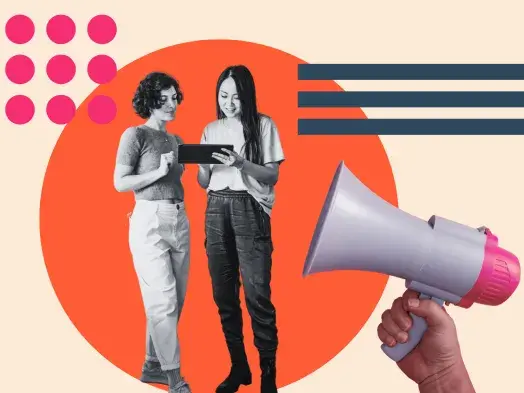Benefits and Challenges of Personalized Marketing
- Message Personalization is the #1 tactic used by email marketers to increase engagement rates. (HubSpot)
- More than 20% of marketers say personalization can improve email engagement. (HubSpot)

- 99% of marketers say personalization helps advance customer relationships, with 78% claiming it has a“strong” or “extremely strong” impact. (Evergage)
- 80% of consumers are more likely to make a purchase when brands offer personalized experiences. (Epsilon)
- 90% of U.S. consumers find personalized marketing content somewhat to very appealing. (Statista)
- 78% of marketers say email is the most personalized channel, followed by websites, which 56% of marketers noted. (Evergage)
- The biggest challenge that ABM teams face is personalizing their strategy. (HubSpot)
- 40% of marketers say their biggest challenge with personalization is linking to data-related technologies, while 34% struggle with poor data quality. (Experian)
- 78% of brands say they struggle with "data debt" or not having enough quick data about their customers to not launch relevant personalization tactics. (Experian)
Consumer Preferences of Personalized Marketing
- 92% of marketers say customers and prospects expect a personalized experience -- up from 85% in 2019. (Evergage)
- 45% of consumers say the "coolest" personalized tactic they've seen is when a brand apologizes for poor shopping experiences. (Accenture)
- 74% of consumers would find “living profiles” valuable if they could be used to curate the experiences, offers, and products they receive. (Accenture)
- 67% of consumers think it’s important for brands to automatically adjust content based on current context. When brands don't adjust accordingly, 42% of consumers will "get annoyed" that content isn’t personalized. (Adobe)
- 82% of consumers primarily engage with marketing content on smartphones, while 63% engage with content primarily on computers. (Adobe)

Data Privacy Preferences
- 83% of shoppers would exchange data for a more personalized experience. (Accenture)
- In a 2019 study, 79% of consumers surveyed believed companies knew too much about them, but 90% were still willing to share behavioral data for a cheaper and easier brand experience. (SmarterHQ)
- Three out of four consumers say a business has never communicated with them online in a way that felt too personalized or invasive. (Accenture)
- Of the one-quarter of consumers who've received a personal or invasive brand experience, 64 percent) say it was because the brand had information about them that they didn’t share knowingly or directly. (Accenture)
- In an Accenture survey, consumers said the "creepiest" personalized marketing tactics involved texting or sending a notification when someone walked past a brand's store and launching social media ads for items consumers browsed on a brand website. (Accenture)
Anonymous vs. Permission-Based Personalization
There are varying opinions in marketing about the appropriate time in the customer lifecycle to use personalization.
While some argue that personalization should only take place after the end-viewer has consciously provided information to the company, other companies use anonymous data, like the location attached to a viewer's IP address, in order to target viewers by location. In developing your personalization strategy, you'll need to decide what the right approach is for your company and customers.
- Regardless of what technology enables, it's essential that your strategy start and end with the needs and preferences of the customer. For many, that will mean waiting until the customer has engaged with you before personalizing content.
- 42% of surveyed marketers claim they personalize using anonymous data. (eConsultancy/Adobe)
- 57% are okay with providing personal information on a website as long as it’s for their benefit and being used in responsible ways. (Janrain)
- 77% would trust businesses more if they explained how they’re using personal information to improve their online experience. (Janrain)
- 62% of adults under 34 are willing to share their location for more relevant content. (Jiwire)
Navigating Marketing Personalization
We have entered into an exciting time for marketers and buyers alike. The ability to create unique experiences for each prospective customer will undoubtedly lead to buying experiences that are more relevant, useful, and enjoyable.
For three quick, easy tips related to marketing personalization, take a look at the following infographic created by Webstacks:

As we navigate this new space and develop strategies, it will be important to keep an open discussion going about what's working and what's not in the world of personalization.
This data is helping to frame the early stages of that conversation. Hopefully, the coming year will result in more results and good case studies of companies using personalization to create a more "human" marketing experience.
Editor's Note: This post was originally published in September of 2013, but was updated in May 11 for comprehensiveness and freshness.











![How to Get a Personalized Assessment of Your Website [Free Tool]](https://53.fs1.hubspotusercontent-na1.net/hubfs/53/00-Blog_Thinkstock_Images/website-grader.png)
